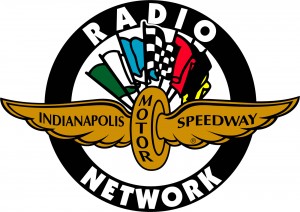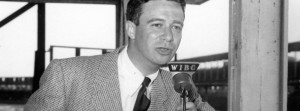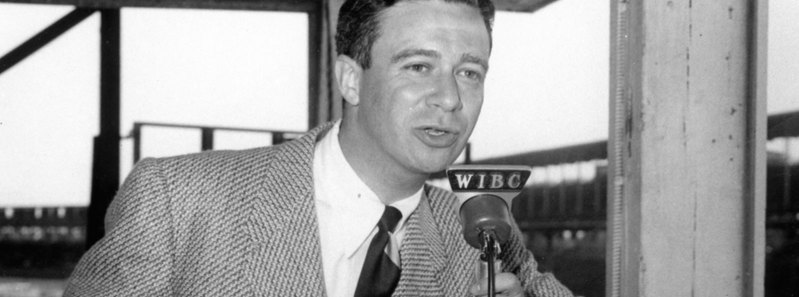 1070 Delivered Announcers, Famous Phrase and More!
1070 Delivered Announcers, Famous Phrase and More!
The world’s largest radio network is the Indianapolis Motor Speedway Radio Network, and AM1070 was its founder.
 Today it delivers “flag to flag” coverage on more than 350 affiliated stations, plus further syndication on XM and Sirius Satellite Radio, and on the American Forces Network. But its beginnings are much more humble.
Today it delivers “flag to flag” coverage on more than 350 affiliated stations, plus further syndication on XM and Sirius Satellite Radio, and on the American Forces Network. But its beginnings are much more humble.
As early as the 1920s, radio broadcasts emanated from the Indianapolis Motor Speedway but not of the entire 500 mile race. NBC, CBS and Mutual Radio Networks annually dispatched reporters to cover it in an abbreviated format that was 30 minutes at the beginning – which NBC legend Graham McNamee wrote quite emphatically that the start of “the 500” was the most spectacular sight he had ever witnessed – with a 15-minute lead-in to the dropping of the green flag at 11:00am, then a series of updates delivered between regular programming every 15 minutes, and finally another 30 minutes approaching the race’s conclusion.

The only remaining national network covering the Speedway post WWII was Mutual and it aligned itself with a comparatively new Indianapolis station, 1070-WIBC, using the several of their local announcers including a talented young staffer named Sid Collins. By the early 1950s Mutual dropped its track affiliation and 1070 stepped in fully to fill the void… and in fact, expanded coverage for the first time to produce play-by-play action of the entire race, plus immediate pre-and-post race action – a full 4.5 hours of continuous coverage!
The impact of the network was phenomenal. By 1954, over 200 domestic stations – including at least one in every state in the continental US – were carrying “the 500” network broadcast, as well as Armed Forces Radio delivering it around the globe.
The Indy 500 is known for many traditions, and one was born out of this massive reach. Many participating station managers had been asking if some sort of standard “out cue” could be used to warn their engineers of an approaching commercial break. A 22-year-old AM1070 copywriter named Alice Greene suggested, “Stay tuned to the greatest spectacle in racing”. Collins took to the phrase, becoming not only his signature call but that for every broadcast since.
The Indy 500 broadcasts under Collins also demonstrated radio’s unique ability to engage and interact with audiences that is now come so commonplace in part due to social media. In the late ‘50s, he began inviting the audience to write in and indicate from whence and under what circumstances they were listening. Some responded immediately by telegram (today it’d be via text message or Twitter). The estimate on postal mail generated by each broadcast numbered at around 5,000 pieces, and the stories were as diversified as they were emotional, those from soldiers stationed overseas being the most moving.
Collins passed away before the 1977 and was succeeded as “Voice of The 500” by Paul Page, who anchored until he moved over to ABC television in 1988. Lou Palmer followed for two years before Bob Jenkins held the anchor’s microphone from 1990-98. Mike King was the chief announcer from 1999 until 2014 being replaced by the return of Paul Page. With the exception of King, all of them were originally contributors on AM1070 in other capacities besides race coverage. So, too, have many of the other reporters stationed in the track turns, the garages or pits through the years.
